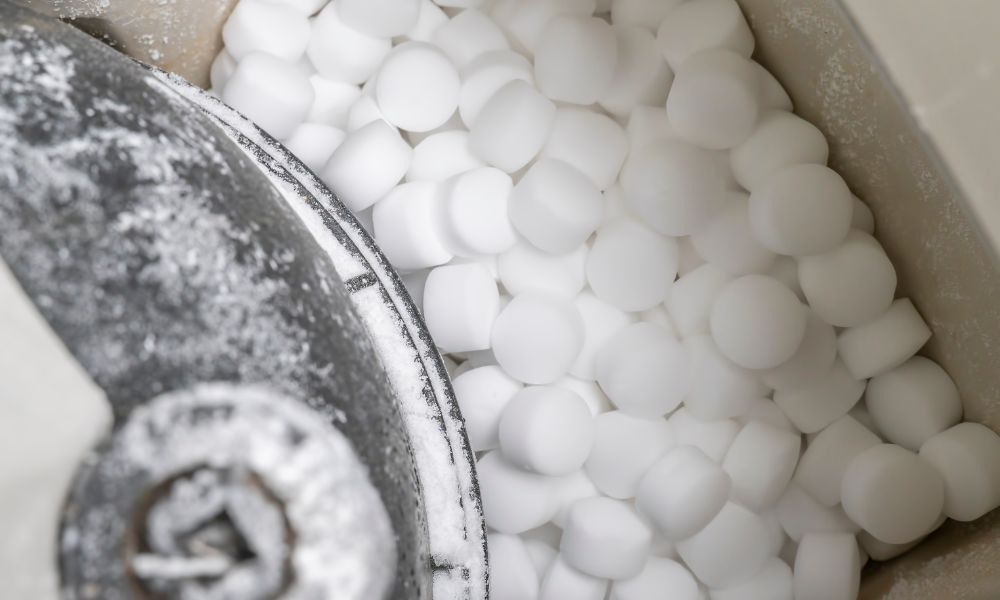
Getting a water softener can benefit you and your household in many ways. Water softeners keep hard water out of your home. Hard water is water that has mineral deposits in it, such as calcium and magnesium. These minerals can wreak havoc on your appliances, cause limescale on your shower heads, and even make it difficult for your soap to lather properly. That said, while having a water softener is certainly a boon for your household, it’s important to learn how to maintain it. You’re likely to have some hiccups. One of those is inadvertently creating a salt bridge, but we’re here to help. Read more below if you need to learn how to break up a salt bridge in your water softener tank.
What Is a Salt Bridge in a Water Softener?
Before diving into water softener troubleshooting, you should know more about salt bridges. Let’s back up and explain some bare-bones facts. Water softeners run regeneration cycles regularly, but sometimes, the salt levels in your tank don’t diminish. You can bet the culprit is a salt bridge if this is true. Salt bridges prevent the salt pellets from dissolving in your water, which the brine tank uses to regenerate the water softener’s resin beads.
Salt bridges happen when your salt solidifies into a crust. This crust then lines the water in the brine tank. Because the water and salt are separate, the water can’t quite dissolve the salt properly, which lets it create a brine solution that flushes the resin bed. Because of this, your water softener won’t perform its standard ion exchange, and your water will stay hard.
What Causes a Salt Bridge
This is a common mistake that many people need to correct. You can accidentally create salt bridges by overfilling your brine tank with salt, using the wrong kind of salt, or running your softener in humid temperatures. This humidity causes moisture to accumulate in the tank, and salt pellets stick to the sides. These pellets form a crust along the edges of the tank. If you live in a humid area, make sure you don’t fill your tank with as much salt as you would in another climate.
How Do You Remove a Salt Bridge
First, you’ll want to turn off any water running in the softener. You can shut off the water in the inlet or bypass the valve. Finally, use a mop or broom to break the salt bridge. Regardless of what you use, it should be firm. Don’t use forceful tools like a hammer or axe. Otherwise, you might damage the tank. When you do this, chip away at the crust just enough so that it comes off, but again, not enough to crack the walls of your tank. Finally, scoop out the chunks of salt from a tank that fell below, vacuum it up, refill it, and turn it on. This is how you break up a salt bridge in your water softener tank.






